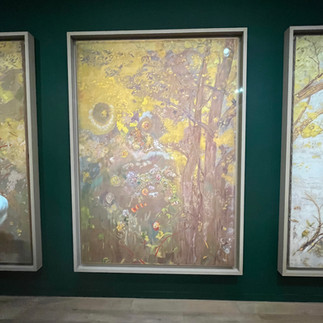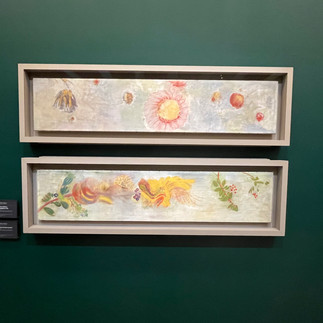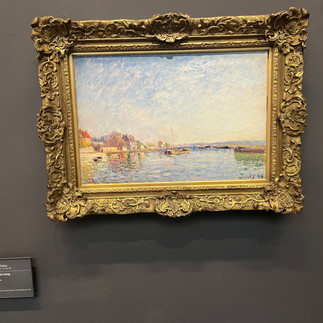Musée d'Orsay - Is this the world's most beautiful art gallery?
- rohanhammett3
- Mar 2, 2024
- 4 min read
Updated: Mar 6, 2024
Unveiling the Splendors of the Musée d'Orsay: A Journey Through Time and Art

Introduction: Nestled on the left bank of the Seine River in the heart of Paris, the Musée d'Orsay stands as a testament to the intersection of history, architecture, and art. This iconic museum, housed in a former railway station, has become a haven for art enthusiasts, housing an unparalleled collection of masterpieces from the 19th and early 20th centuries. As we embark on a virtual journey through this cultural gem, we will explore its location, delve into its rich history, marvel at its unique architecture, analyze its staggering visitor numbers, and immerse ourselves in the diverse and awe-inspiring collections it proudly displays.
Location: The Musée d'Orsay is situated in the 7th arrondissement of Paris, an area known for its cultural richness and historic significance. The museum is positioned along the Seine River, providing visitors with breathtaking views of the city and easy access to other cultural landmarks such as the Louvre and the Notre-Dame Cathedral. Its strategic location makes it a prime destination for both locals and tourists, offering a seamless blend of artistic immersion and Parisian charm.

History: The history of the Musée d'Orsay begins with the transformation of the Gare d'Orsay, a grand railway station constructed for the 1900 Exposition Universelle (World's Fair). Designed by architect Victor Laloux, the station served as a bustling transportation hub until its closure in 1939. Threatened with demolition in the 1970s, the building was saved by a collective appreciation for its architectural splendor and repurposed into the magnificent museum we know today.
Officially inaugurated in December 1986, the Musée d'Orsay was envisioned as a haven for art from the period spanning 1848 to 1914. Its collections span a range of artistic movements, including Realism, Impressionism, Post-Impressionism, and Art Nouveau. The museum's inception marked a pivotal moment in the preservation of France's artistic heritage, and it has since become a global beacon of cultural significance.
Architecture: The Musée d'Orsay's architecture is a stunning blend of Beaux-Arts and Industrial design, with its distinctive clock tower and massive glass roof stealing the spotlight. Victor Laloux's vision for the Gare d'Orsay transcends its original purpose, as the building seamlessly marries grandeur with functionality. The expansive main hall, bathed in natural light streaming through the roof, provides an immersive and awe-inspiring setting for the exhibited artworks.
The museum's architectural prowess extends beyond its exterior. The interior spaces, meticulously designed to accommodate a diverse collection, offer a harmonious journey through art movements and epochs. The clock faces overlooking the Seine not only serve as a reminder of the building's railway origins but also symbolize the timeless nature of the art within its walls.
Visitor Numbers: Year after year, the Musée d'Orsay welcomes millions of visitors from around the world, attesting to its status as a cultural pilgrimage site. The annual visitor numbers, which have consistently exceeded 3 million, underscore the museum's global appeal. Its accessibility, coupled with the allure of its collections, ensures a diverse audience, from seasoned art aficionados to those taking their first steps into the world of fine arts.

The museum's popularity has also been fueled by dynamic temporary exhibitions, educational programs, and engaging events. These initiatives not only cater to the seasoned art connoisseur but also open the doors to art appreciation for new audiences, further solidifying the Musée d'Orsay as a cultural beacon for all.
Collections: Walking through the Musée d'Orsay is akin to embarking on a captivating journey through time and artistic evolution. The museum's vast collection encompasses paintings, sculptures, decorative arts, and photography, providing a comprehensive panorama of the creative brilliance of the 19th and early 20th centuries.
The Impressionist and Post-Impressionist galleries are undoubtedly the crown jewels of the collection, featuring masterpieces by renowned artists such as Monet, Van Gogh, Degas, and Cézanne. The Realism and Symbolism sections offer glimpses into the socio-political climate of the time, while the Art Nouveau collection showcases the innovative and ornate designs of the era.

The Musée d'Orsay's commitment to inclusivity is evident in its representation of diverse artistic movements and lesser-known artists. The rich tapestry of its collections ensures that visitors leave with not only a deep appreciation for the well-known masterpieces but also a newfound admiration for the hidden gems that grace its walls.
Conclusion: In conclusion, the Musée d'Orsay stands as a beacon of artistic brilliance and historical preservation, drawing visitors into a mesmerizing journey through the transformative periods of the 19th and early 20th centuries. From its prime location along the Seine to its architectural splendor, the museum embodies the soul of Parisian culture and artistic expression.
As the Musée d'Orsay continues to evolve, welcoming new generations of art enthusiasts, it remains a testament to the enduring power of creativity and the timeless allure of the human spirit. Whether you're a seasoned art connoisseur or a first-time visitor, the Musée d'Orsay promises an enchanting exploration of art, history, and the boundless depths of human imagination.









































Comments